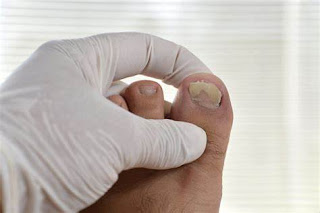If you're experiencing discomfort or embarrassment due to a fungal infection on your toenails, you're not alone. Toenail fungus, also known as onychomycosis, is a common condition that affects millions of people worldwide. In this article, we will dive deep into the world of toenail fungus, exploring what it is, how it's caused, and most importantly, how you can effectively treat it to restore the health and appearance of your toenails.
What is Toenail Fungus?
Toenail fungus is a type of fungal infection that occurs when fungi, such as dermatophytes, invade the nails. The fungi thrive in warm, dark, and moist environments, making the toenails an ideal breeding ground for them to grow and multiply.
Causes of Toenail Fungus
There are several risk factors that can increase your chances of developing toenail fungus. These include:
- Walking barefoot in public areas, such as communal showers, locker rooms, and swimming pools, where the fungi can be easily transmitted.
- Wearing tight-fitting shoes or socks that trap moisture, creating an environment conducive to fungal growth.
- Having poor circulation or a weakened immune system, which can make it easier for the fungus to invade the nails.
- Having a history of nail trauma or injury, which can weaken the nails and make them more susceptible to fungal infection.
- Having diabetes or other health conditions that affect blood flow to the extremities, increasing the risk of developing toenail fungus.
Symptoms of Toenail Fungus
Toenail fungus can manifest in various ways, and the symptoms may vary from person to person. Some common signs of toenail fungus include:
- Thickened or distorted nails
- Yellow, brown, or white discoloration of the nails
- Fragile or brittle nails that may crumble or split
- Buildup of debris under the nails
- Change in the shape or texture of the nails
- Localized pain or discomfort
- Loosening of the nails from the nail bed
Treatment Options for Toenail Fungus
If you suspect that you have toenail fungus, it's important to seek prompt treatment to prevent the infection from worsening or spreading to other nails. There are several treatment options available, including:
1. Topical Antifungal Medications
Topical antifungal medications, such as creams, gels, or nail lacquers, can be applied directly to the affected nails to kill the fungi. These medications are available over-the-counter or by prescription, and they work by inhibiting the growth of the fungi and preventing them from spreading further.
2. Oral Antifungal Medications
Oral antifungal medications are prescription medications that are taken orally to treat toenail fungus. These medications work by attacking the fungifrom within the body, providing a systemic treatment approach. They are typically recommended for more severe cases of toenail fungus or when topical treatments have not been effective. However, oral antifungal medications may have potential side effects and interactions with other medications, so it's important to consult with a healthcare professional before taking them.
3. Laser Treatment
Laser treatment is a relatively newer approach to treating toenail fungus. It involves using laser energy to penetrate the nail and target the fungi, effectively killing them. Laser treatment is generally considered safe and has shown promising results in some studies, but it can be more expensive and may require multiple sessions for optimal outcomes.
4. Home Remedies
There are also various home remedies that are often suggested for treating toenail fungus. These may include using natural antifungal agents, such as tea tree oil, apple cider vinegar, or oregano oil, applying Vick's VapoRub, or soaking the feet in a solution of warm water and Epsom salt. While some people may find relief with these remedies, it's important to note that scientific evidence supporting their effectiveness is limited, and they may not be as reliable or fast-acting as medical treatments.
Prevention Tips for Toenail Fungus
Prevention is key when it comes to toenail fungus. Here are some tips to help you reduce your risk of developing this common infection:
- Keep your feet clean and dry, especially after being in public areas like pools or locker rooms.
- Wear breathable shoes made of natural materials, and avoid tight-fitting shoes or socks that trap moisture.
- Trim your nails regularly and avoid cutting them too short or rounding the edges, which can create small openings for fungi to enter.
- Avoid sharing nail clippers, files, or other nail care tools with others to prevent cross-contamination.
- Wear protective footwear, such as flip-flops, in public showers or changing areas to minimize direct contact with the fungi.
- Choose a reputable nail salon and make sure they follow proper hygiene and sterilization practices.
- Maintain overall good foot hygiene, including washing your feet daily, keeping them moisturized, and inspecting your nails regularly for any signs of infection.
Conclusion
Toenail fungus can be a bothersome and persistent condition, but with proper understanding and treatment, it can be effectively managed. Whether you opt for topical or oral medications, laser treatment, or home remedies, it's important to consult with a healthcare professional for an accurate diagnosis and appropriate treatment plan. Additionally, taking preventive measures to reduce your risk of developing toenail fungus is crucial in maintaining healthy and happy feet. Don't let toenail fungus hold you back - take action and restore the health and appearance of your nails today!
Keywords: Fungal infection, toenail fungus, onychomycosis, treatment, causes, symptoms, prevention
Note: This article is for informational purposes only and should not be considered as medical advice. Always consult with a qualified healthcare professional before starting any treatment for toenail fungus or any other health condition.




0 comments:
Post a Comment
Note: Only a member of this blog may post a comment.